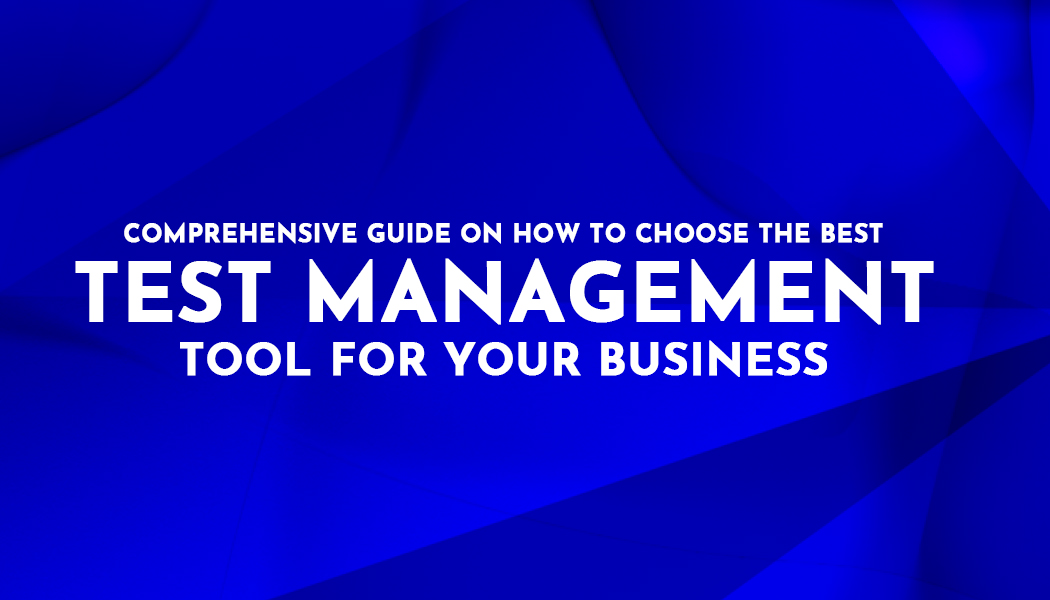Comprehensive Guide on How to Choose the Best Test Management Tool for Your Business
Are you wondering why test management is critical? Simple, we have to manage the testing life cycle of a software to prevent daunting results.
Test management collectively processes the organization, management, and control of the test process, assets, and procedures involving automated and manual testing of a project. Every test management aims to improve test success in order to increase software quality.
With several choices available, it can be overwhelming to choose the best test management tool. We have curated a comprehensive guide to help you determine the best tool for your needs. In this guide, we will discuss the most vital parameters that are often overlooked while selecting the best tool.
Parameters in Choosing the Best Test Management Tool
Due to the complexity in testing activities of software development, you need to have a test case management tool to succeed in your project. However, the market is fully loaded with open-source and commercial test management tools. It will aid in bringing a smooth and effective software with the features and help a management tool offers. More so, it is a must-have for growing and large businesses to have an efficient and scalable test management tool.
Here are the critical parameters in choosing the best test management tool for your business.
Cost

Filter and make a shortlist of the available test management tools that suit your project budget. If the budget permits the cost, a commercial management tool is the right choice. It provides ease and reliably maintains business projects. More so, you have to decide on the licensing cost you need to pay.
The cost will depend mostly on the time frame in using the tool. Fortunately, several commercial tools come with a customized license. Customizable plans allow you to pay as per the features and duration of use.
Productivity
With the rapid and continuous changes in technology, the test management team faces steep and gradual challenges. More so, the software also needs to be tested on multiple platforms. As manual testing requires most of the testing time but it can not be completely replaced. The best solution is to choose a test management solution that can incorporate both manual and automation testing results.

The Granularity of Test Information
Detailed information reports concerning the testing process must be included in the test management tool features. It is easier to distinguish which part of the testing process has failed, rather than considering the whole test case has failed. Each change may be major or minor; the test management tool needs to disseminate the information to the corresponding team members.
The test results should be saved as a session and can be compared to other test run results. Test management tools are expected to have linking stories, creation of defects, documenting strategies, and the like.
Release Management Tracking
It is expected that the management tool will facilitate multiple activities at the same time. A good management tool needs to have a sturdy ability to release management tracking. It needs to have the capability to record the tested and released test cases to avoid conflicts from other test artifacts.
The test management tool has to guarantee collaboration with stakeholders with regards to the requirements. It needs to have a single shared cloud to collaborate and share requirements, evaluate defects, and understand the relationships between test processes. There must be an enforced standardization to have high-quality and consistent results.
Reporting

It is challenging for the management team to determine the number of defects that happened during the software release. More so, it becomes more devastating if they do not know when it will be resolved. Thus, the right test management tool can measure its productivity through its reports.
There has to be a clear and detailed summary of the developer’s activities and processes from the management of requirements for the testing and fixing of defects. It should deliver the test plan progress, authoring status, test case, status by suites, by area, and the like in its reports.
The right test management tool should have the following features:
- Dashboard and graphs to provide insight on the running and awaiting execution of automated tests
- View automated test runs and manual test results together
- Highlights common test attributes
Agile Support

The current market is increasing its demand for agile support. Hence, it is essential to be equipped with a test management tool that supports the agile methodology. With agile, the requirements fluctuate and complete incrementally. It promotes a deeper connection between the testers, developers, and stakeholders.
A test management tool with agile should support creating stories, estimation, Scrum and Kanban, charts and reports, and sprint backlog planning. An agile environment helps test run comparison productive and keeps the record for each backlog and iteration of the products released.
External Tools Integration

Automation reduces the burden of test engineers. Go for a test management tool that has easy integration with the automation tools. The tool needs to have the ability to manage test scripts, schedule, and launch both local and remote hosts. More so, it is an advantage to have a management tool that can save automation test results.
A test management tool should also support continuous integration with external tools to launch tests automatically. The test launch is easily triggered by any action from the developer or a scheduled task of a test case.
The quality assurance team prefers a management tool integrated with a bug tracking tool to make the testing process easy. The bug tracking tool allows the team to link bugs and instantly run a test case for centralized management for the software testing process.
Mobile Support

It is helpful when the test management tool supports mobile devices and tablets. Mobile support helps the teams who are in different geographical locations work in sync. The support of multiple devices will increase accessibility. More so, it should have the full and not reduced feature in mobile devices and tablets.
Support Channel

A support channel should provide an approachable team with interactive channels like phone calls, live chats, and tickets. The support team has to be committed to helping the customers in every possible way.
Some test management tools are more focused on making websites and ads more attractive to consumers. However, to continue and attract more customers to your business, it is best to have a test management tool that focuses on providing the best help desk support.
Some features of support channel the best test management tool have to help their customers are:
- FAQs or User Guides
- Live Chat
- Phone Call
- Help Desk Ticket
- Product Documentation Information
Furthermore, some management tools provide live vide conference with their expert representative to solve the consumer queries. But, if a live conference is not available, some provide accessible resources like recorded video demonstrations.
Some of the mentioned support channels may not be available for all the management tools. But, you should at least choose the tool that facilitates the support channel you prefer.
Lastly, the management tool must be consumer-focused. It should have a user-friendly interface by accommodating multiple time zones and languages. More so, the tool should have an advanced searching ability.
Evaluate and Compare Different Tools
You will find several test data management tools in the market. Thus, choosing the perfect management solution for your business has become a challenging process. Follow the steps to evaluate and compare different tools:
1. Before you start evaluating the tool, understand the needs and requirements for the project. To save time, you have to know what you are looking for and the features needed.
2. After you have identified the project requirements, start examining the tools that will suit your budget, and needed features.
3. It is best to go for multiple compatible tools than single-purpose tools.
4. Next, you have to address the development environment to consider tool features. The development environment includes security, privacy, IT administration support, maintenance, and hosting.
5. You have to consider the technical issues that may surface if you use a new tool.
6. Evaluate whether the test management tool offers the essential basic features required.
7. If you are looking for an add-on to your defect management tool, evaluate if the new tool is compatible with the defect management system. But, if you want a new management tool, get one with a built-in defect management solution.
8. If you have chosen a test management tool, make sure it can establish a connection between the requirements and test cases.
When comparing the test management tools, distinguish them based on the following criteria:
- Adaptability to the different development methods
- Cost
- Integration
- Ramp-up Time
- Scheduling capabilities
- Security
Final Thought
Before choosing the best test data management tool, you have to make sure you know what you need for your business. You have to define the requirements to move forward in choosing the right one. Furthermore, do not waste your time in evaluating all the standard features of the management tool. Instead, determine their differences that can make your business stand out.




